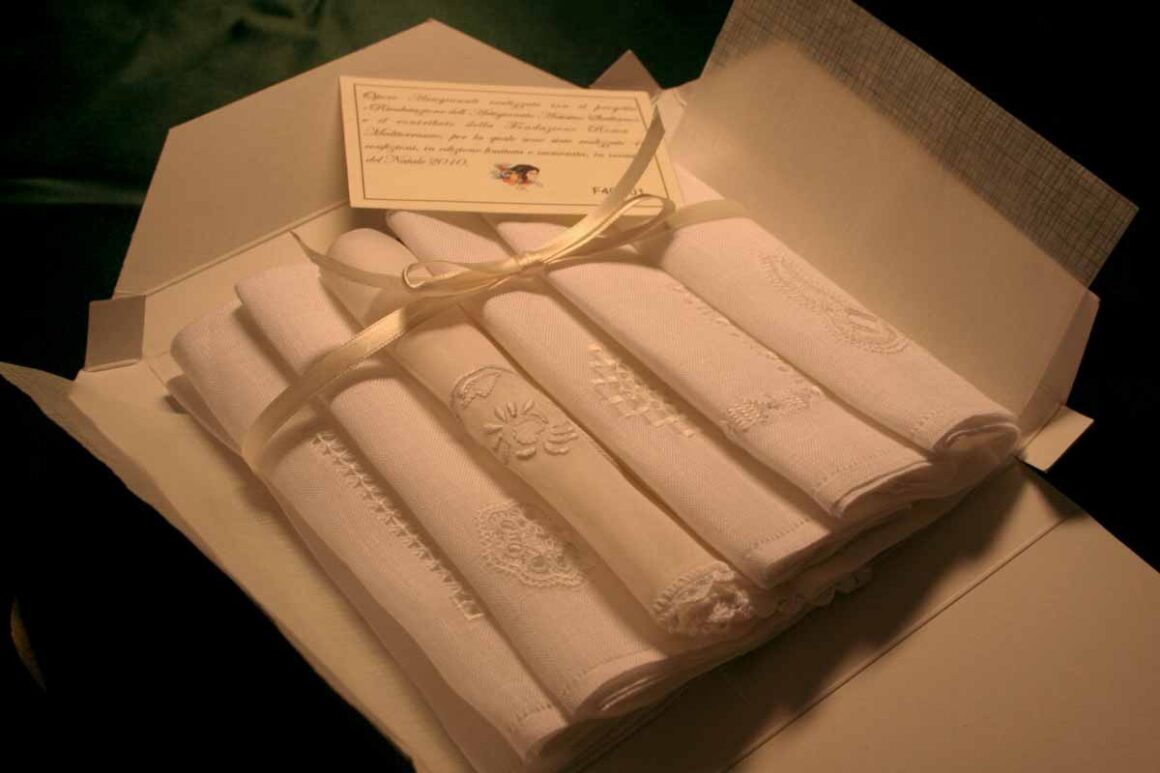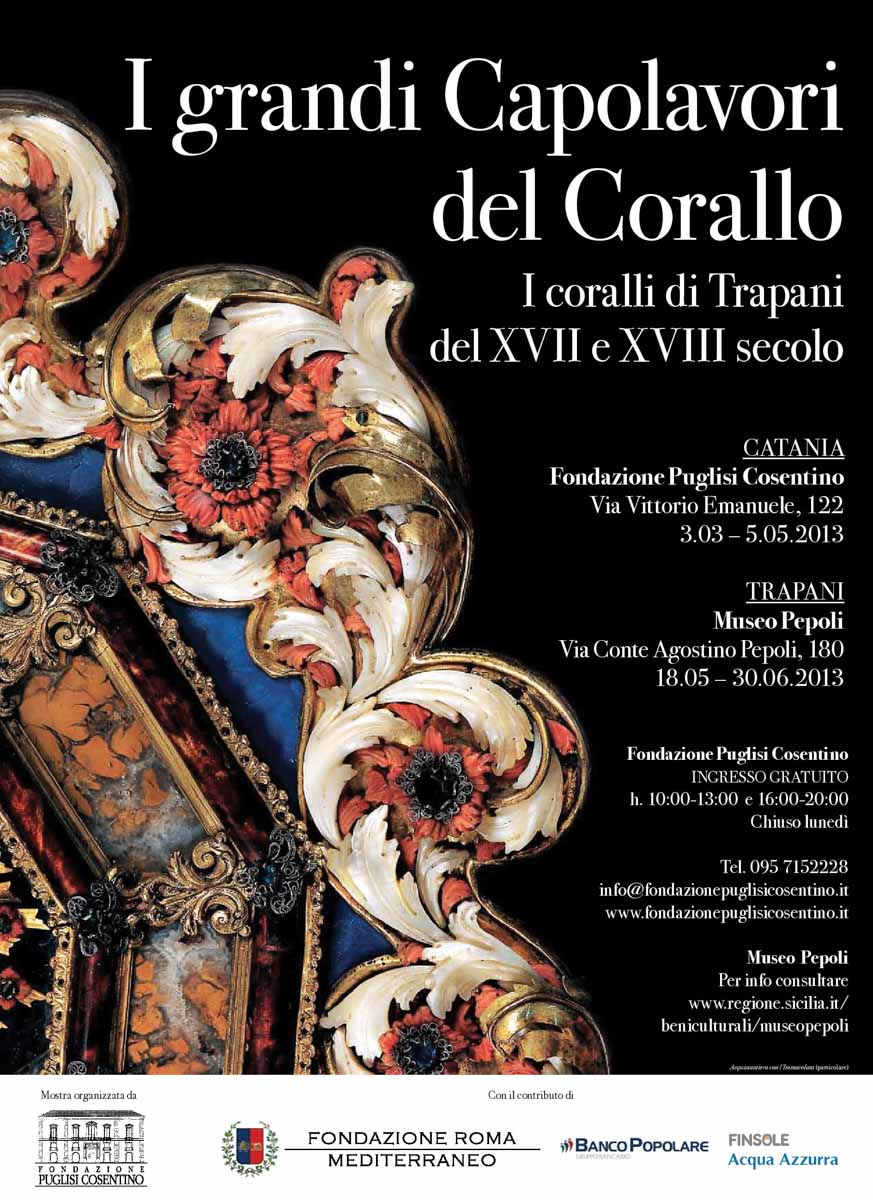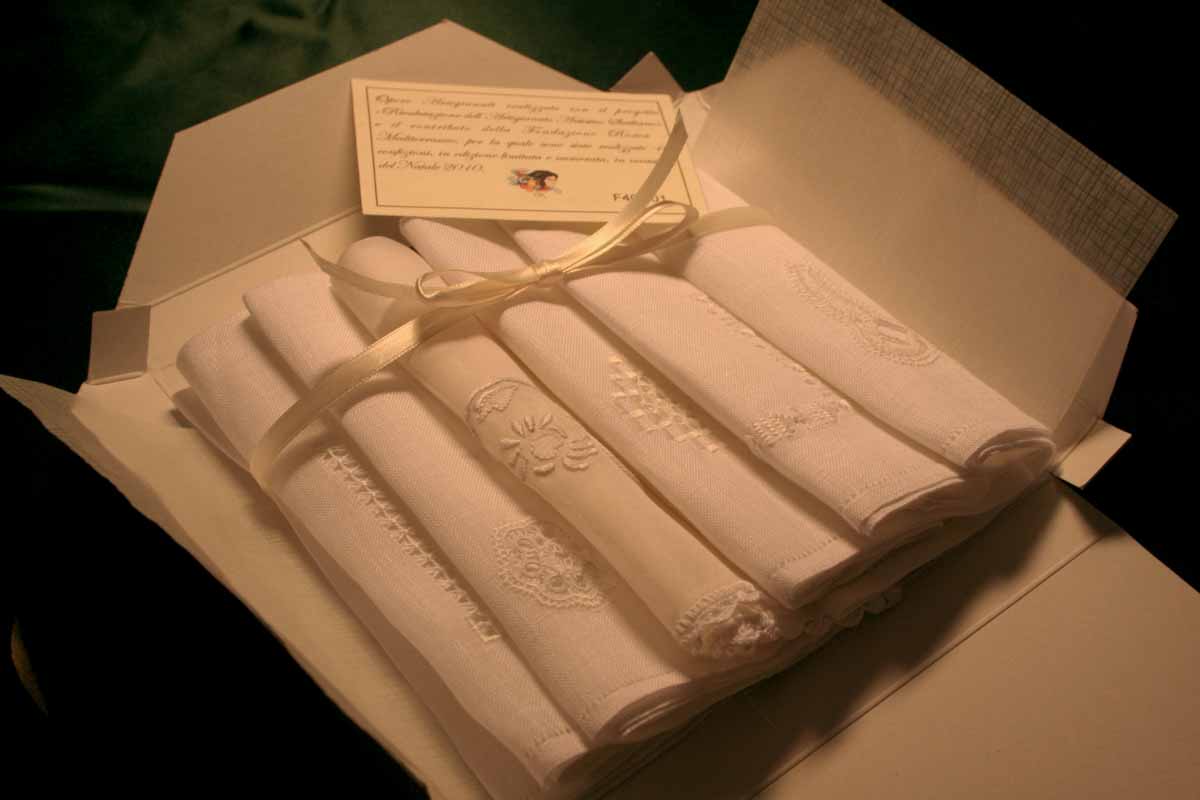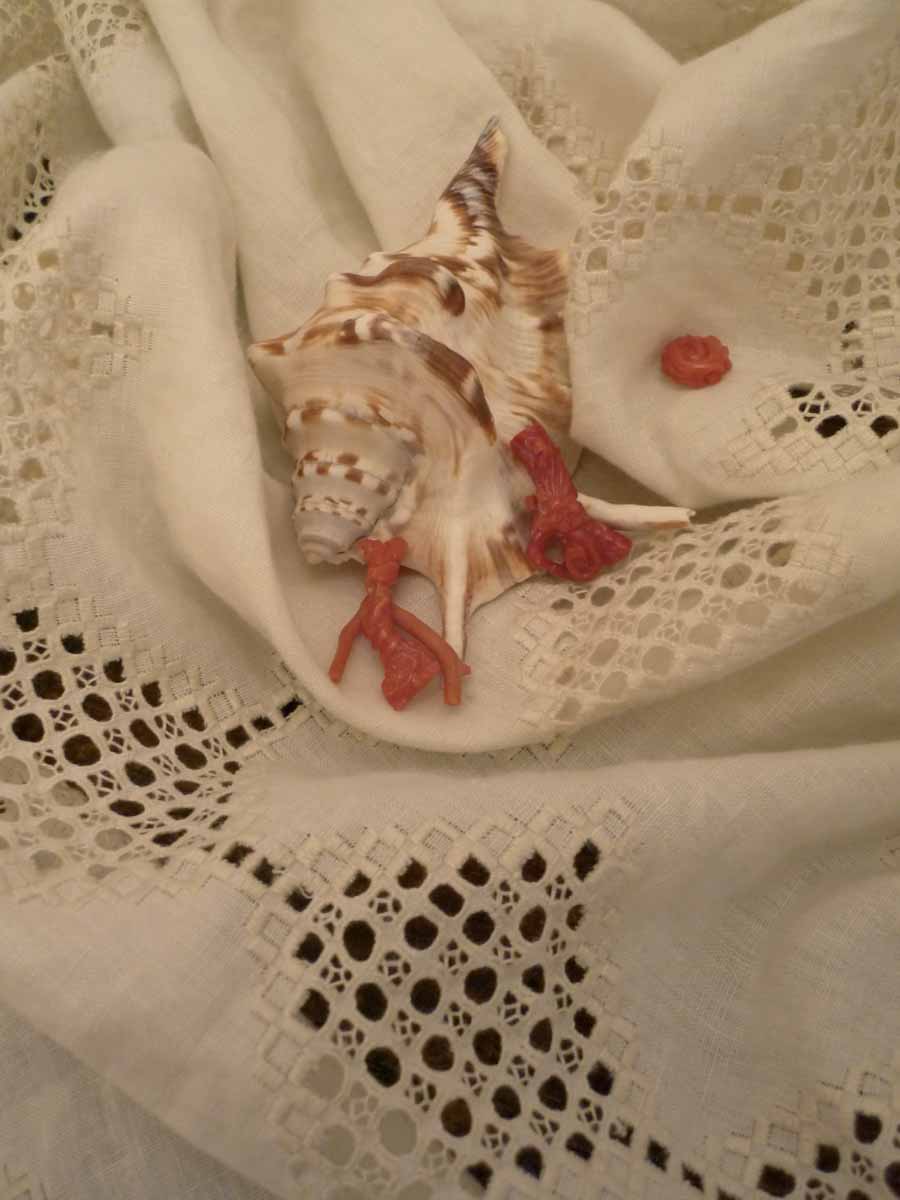TRAPANI, May, 2013. Brought together for the first time in a vast and unique exhibition, the masterpieces of the ancient Sicilian art of red coral have returned to their origins, thanks to the Fondazione Puglisi Cosentino, with the support of the Fondazione Roma Mediterraneo. The successful exhibition held in Catania at the Palazzo Valle – which boasted over 30,000 visitors in two months – closed its doors on Sunday, May 5th, to be transferred to its original location in Trapani. The exhibition will open again from May 18th to June 30th, with several small differences in its installation, and curated by Valeria Li Vigni, Director of the Agostino Pepoli Interdisciplinary Museum in Trapani and Professor of Museology at the Suor Orsola di Benincasa University in Naples. (Valeria Li Vigni collaborated with Maria Concetta Di Natale and Vincenzo Abbate in creating the exhibition catalogue published by Silvana Editoriale). As in Catania, admission to the exhibition in Trapani is free of charge, so that visitors may enjoy the priceless heritage of this most ancient local tradition.
The focal point of several historic collections are proof of the great mastery of goldsmiths, engravers, sculptors, and simple craftspeople who worked in Sicily between the 17th and the 18th centuries, especially in Trapani, where over 40 coral workshops were situated at the end of the 17th century. The collections include those of the Banca Popolare di Novara (from the Palazzo Bellini in Novara that houses the permanent exhibition of the Fondazione BPN), the Pepoli Museum of Trapani, the Fondazione Whitaker (from Villa Malfitano in Palermo), the Diocesan Museum of Monreale, as well as other public collections, and also single pieces, many never before displayed and that were loaned to the foundation by both Italian and foreign private collectors. Several valuable finds from Shanghai and China, which were not present in Catania, will also be displayed in Trapani.
This is not a simple exhibition of works of art, but one that aims at creating an interactive relationship with its visitors. In fact, during the time it will be on display, several events will take place that emphasize the connection between the exhibition and the territory. Tours with shuttle buses, and tour guides, for visits to the old workshops, as well guided tours for classes and groups, will be available.
The exhibition is also, however, an interactive exhibition on a cultural level: round tables, workshops with the collaboration of the artisans who still work in the territory, and promotional activities curated by the students of the Istituto del Design del Corallo will also be scheduled.
Almost 130 priceless pieces have been carefully selected from the collections mentioned: jewels, sacred objects (goblets, ostensories, crucifixes, reliquaries, rosaries, and nativity scenes), inkwells, salt shakers, and also fine furnishings, such as mirrors, frames, card tables, monumental jambs for royal houses and palaces. Works of art so refined in their craftsmanship and in the materials used that they often became gifts to the State. Some are tried and true marvels. Intricate objects intended for the Wunderkammers, the cabinets of curiosities of 6th-century and 7th-century aristocrats: erudite princes who were enthusiastic about science, fine arts, and literature and collected ante litteram museums in their houses, proof of how nature was skillfully elaborated by craftspeople of the time.
What affected the ever so exquisite and manneristic red coral production of the craftspeople of Trapani seemed to be the rite of the Annunciation to the Blessed Virgin Mary, which would gather together thousands of pilgrims every year, increasing the demand for rosaries made with the red “ornament of the sea”.
In fact, this is the etymology of the word “coral”: from the Greek korallìon, where koreo, means ”decoration”, and alòs that means “sea”.
“To the magic of coral,” Alfio Puglisi Cosentino explained, “and its interaction with the history and the thousand-year culture of Sicily, we dedicate this new chapter of the Fondazione Puglisi Cosentino that, with free admission also in Trapani, presents an exhibition project which, for the first time, unites the masterpieces of several public collections with those of private collectors who desired to share these treasures of our past with an enthusiastic and curious audience. A representation of the finest coral craftsmanship of Trapani and its most skilled sculptors, such as Amato and Serpottà. The exhibition at the Pepoli Museum preserves the prolific synergy – inaugurated at the Palazzo Valle in Catania – that exists between the Fondazione Puglisi Cosentino and the Fondazione Roma Mediterraneo. The President of the Fondazione Roma-Mediterraneo, Prof. Esq. Emmanuele Francesco Maria Emanuele, stated: “We are proud to contribute to this exhibition, which is just another confirmation of the Italian and, in particular, the Sicilian taste for craftsmanship. Past exhibitions are proof of the Fondazione Roma Mediterraneo’s commitment towards promoting cultural heritage in Sicily, exhibitions such as those dedicated to Piero Guccione and Alessandro Kokocinski at the Palazzo Sant’Elia in Palermo, and those that brought together Ancient and Modern art through works by Igor Mitoraj and Fabrizio Plessi’s suggestive installations set-up in the Valley of the Temples in Agrigento. This commitment will continue with other exhibitions at the Palazzo Valle in Catania, headquarters of the Fondazione Puglisi Cosentino, where masterpieces by foreign painters in 19th-century Sicily and early 20th-century Sicilian painters will be exhibited. These two exhibitions will then be transferred to Palermo and Erice.
CORAL, Information
Animal, vegetable, and mineral. Since ancient times, many legends and superstitions have flourished around the triple nature of coral and its presumed therapeutic and apotropaic properties. These legends contributed to the popularity of its use, not only among various social classes, but also among communities (like the Celts, Chinese, Mongolians, and Japanese) situated far from the Mediterranean Sea, where red coral has always proliferated.
According to the classification of the naturalist, Linneo, coral is, in fact, a tiny animal that lives at depths between 80 and 200 meters in the Mediterranean Sea and in the eastern Atlantic Ocean. It resembles a flower and has 6 or 8 tentacles that it uses to procure food from plankton. Coral has a sac-like body with rudimentary muscles; it secrets calcium carbonate, which gives life to coral forests. And it is precisely the vast barrier reefs, which have formed over millions of years, that created the Earth’s crust.
The most prosperous period for coral fishery and coral craftsmanship, known since antiquity in Europe, was the 15th century. The ships used at that time were called ”Coralline”, and had Latin sails and masts. Between the 16th and 17th centuries, a large quantity of every species of coral (red, white, and black) was fished off the coast of Trapani and around the Egadi Islands. The rapid increase in coral fishery during the past centuries seriously endangered the survival of the species and, today, coral harvesting is regulated and safeguarded in protected marine areas, or even circumscribed to specific authorized underwater farms.
There are many local legends related to coral, considered a lucky charm with powers that are even therapeutic. In his encyclopedia, Naturalis Historia, Pliny the Elder explained how coral was used for skin diseases and how the Gauls used it as an amulet for children to ward off evil. In the Middle Ages, coral was used to protect infants from lightning and the risk of sudden death. Its little cross-shaped branches were a shield against Satan, demons, and evil influences, and the reason why it was and still is common to give coral as a gift at baptisms. It was also widely used by pagans as a horn-shaped pendant.
Coral was considered to have other medicinal properties: it was ground for use as a remedy to treat hemorrhaging and menstrual cycle problems, and as a coagulant for injuries, ulcers, and scars. Coral dust was given to teething infants and was also believed to have other benefits, which included curing malaise and even epileptic seizures, as well as enhancing vitality and generating power in adults.
According to Roman mythology, coral was the petrified blood of Medusa, while its shape, instead, inspired the symbolism of trees, intended as the origin and the axis of the Earth; a connection between different worlds, the union between the three kingdoms of nature: animal, vegetable, and mineral, as well as life, represented by its blood-red color.
Lastly, coral has always been the symbol of the beauty and perfection of the Universe. It is for this reason that, along with gold, it became the most sought-after raw material for jewels and religious objects, and also sacred and profane furnishings.




